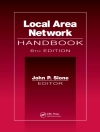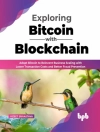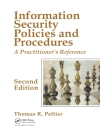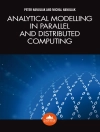Describes how evolutionary algorithms (EAs) can be used to identify, model, and minimize day-to-day problems that arise for researchers in optimization and mobile networking
Mobile ad hoc networks (MANETs), vehicular networks (VANETs), sensor networks (SNs), and hybrid networks—each of these require a designer’s keen sense and knowledge of evolutionary algorithms in order to help with the common issues that plague professionals involved in optimization and mobile networking.
This book introduces readers to both mobile ad hoc networks and evolutionary algorithms, presenting basic concepts as well as detailed descriptions of each. It demonstrates how metaheuristics and evolutionary algorithms (EAs) can be used to help provide low-cost operations in the optimization process—allowing designers to put some “intelligence” or sophistication into the design. It also offers efficient and accurate information on dissemination algorithms, topology management, and mobility models to address challenges in the field.
Evolutionary Algorithms for Mobile Ad Hoc Networks:
- Instructs on how to identify, model, and optimize solutions to problems that arise in daily research
- Presents complete and up-to-date surveys on topics like network and mobility simulators
- Provides sample problems along with solutions/descriptions used to solve each, with performance comparisons
- Covers current, relevant issues in mobile networks, like energy use, broadcasting performance, device mobility, and more
Evolutionary Algorithms for Mobile Ad Hoc Networks is an ideal book for researchers and students involved in mobile networks, optimization, advanced search techniques, and multi-objective optimization.
Tabla de materias
Preface xiii
PART I BASIC CONCEPTS AND LITERATURE REVIEW 1
1 INTRODUCTION TO MOBILE AD HOC NETWORKS 3
1.1 Mobile Ad Hoc Networks 6
1.2 Vehicular Ad Hoc Networks 9
1.2.1 Wireless Access in Vehicular Environment (WAVE) 11
1.2.2 Communication Access for Land Mobiles (CALM) 12
1.2.3 C2C Network 13
1.3 Sensor Networks 14
1.3.1 IEEE 1451 17
1.3.2 IEEE 802.15.4 17
1.3.3 Zig Bee 18
1.3.4 6Lo WPAN 19
1.3.5 Bluetooth 19
1.3.6 Wireless Industrial Automation System 20
1.4 Conclusion 20
References 21
2 INTRODUCTION TO EVOLUTIONARY ALGORITHMS 27
2.1 Optimization Basics 28
2.2 Evolutionary Algorithms 29
2.3 Basic Components of Evolutionary Algorithms 32
2.3.1 Representation 32
2.3.2 Fitness Function 32
2.3.3 Selection 32
2.3.4 Crossover 33
2.3.5 Mutation 34
2.3.6 Replacement 35
2.3.7 Elitism 35
2.3.8 Stopping Criteria 35
2.4 Panmictic Evolutionary Algorithms 36
2.4.1 Generational EA 36
2.4.2 Steady-State EA 36
2.5 Evolutionary Algorithms with Structured Populations 36
2.5.1 Cellular EAs 37
2.5.2 Cooperative Coevolutionary EAs 38
2.6 Multi-Objective Evolutionary Algorithms 39
2.6.1 Basic Concepts in Multi-Objective Optimization 40
2.6.2 Hierarchical Multi-Objective Problem Optimization 42
2.6.3 Simultaneous Multi-Objective Problem Optimization 43
2.7 Conclusion 44
References 45
3 SURVEY ON OPTIMIZATION PROBLEMS FOR MOBILE AD HOC NETWORKS 49
3.1 Taxonomy of the Optimization Process 51
3.1.1 Online and Offline Techniques 51
3.1.2 Using Global or Local Knowledge 52
3.1.3 Centralized and Decentralized Systems 52
3.2 State of the Art 53
3.2.1 Topology Management 53
3.2.2 Broadcasting Algorithms 58
3.2.3 Routing Protocols 59
3.2.4 Clustering Approaches 63
3.2.5 Protocol Optimization 64
3.2.6 Modeling the Mobility of Nodes 65
3.2.7 Selfish Behaviors 66
3.2.8 Security Issues 67
3.2.9 Other Applications 67
3.3 Conclusion 68
References 69
4 MOBILE NETWORKS SIMULATION 79
4.1 Signal Propagation Modeling 80
4.1.1 Physical Phenomena 81
4.1.2 Signal Propagation Models 85
4.2 State of the Art of Network Simulators 89
4.2.1 Simulators 89
4.2.2 Analysis 92
4.3 Mobility Simulation 93
4.3.1 Mobility Models 93
4.3.2 State of the Art of Mobility Simulators 96
4.4 Conclusion 98
References 98
PART II PROBLEMS OPTIMIZATION 105
5 PROPOSED OPTIMIZATION FRAMEWORK 107
5.1 Architecture 108
5.2 Optimization Algorithms 110
5.2.1 Single-Objective Algorithms 110
5.2.2 Multi-Objective Algorithms 115
5.3 Simulators 121
5.3.1 Network Simulator: ns-3 121
5.3.2 Mobility Simulator: SUMO 123
5.3.3 Graph-Based Simulations 126
5.4 Experimental Setup 127
5.5 Conclusion 131
References 131
6 BROADCASTING PROTOCOL 135
6.1 The Problem 136
6.1.1 DFCN Protocol 136
6.1.2 Optimization Problem Definition 138
6.2 Experiments 140
6.2.1 Algorithm Configurations 140
6.2.2 Comparison of the Performance of the Algorithms 141
6.3 Analysis of Results 142
6.3.1 Building a Representative Subset of Best Solutions 143
6.3.2 Interpretation of the Results 145
6.3.3 Selected Improved DFCN Configurations 148
6.4 Conclusion 150
References 151
7 ENERGY MANAGEMENT 153
7.1 The Problem 154
7.1.1 AEDB Protocol 154
7.1.2 Optimization Problem Definition 156
7.2 Experiments 159
7.2.1 Algorithm Configurations 159
7.2.2 Comparison of the Performance of the Algorithms 160
7.3 Analysis of Results 161
7.4 Selecting Solutions from the Pareto Front 164
7.4.1 Performance of the Selected Solutions 167
7.5 Conclusion 170
References 171
8 NETWORK TOPOLOGY 173
8.1 The Problem 175
8.1.1 Injection Networks 175
8.1.2 Optimization Problem Definition 176
8.2 Heuristics 178
8.2.1 Centralized 178
8.2.2 Distributed 179
8.3 Experiments 180
8.3.1 Algorithm Configurations 180
8.3.2 Comparison of the Performance of the Algorithms 180
8.4 Analysis of Results 183
8.4.1 Analysis of the Objective Values 183
8.4.2 Comparison with Heuristics 185
8.5 Conclusion 187
References 188
9 REALISTIC VEHICULAR MOBILITY 191
9.1 The Problem 192
9.1.1 Vehicular Mobility Model 192
9.1.2 Optimization Problem Definition 196
9.2 Experiments 199
9.2.1 Algorithms Configuration 199
9.2.2 Comparison of the Performance of the Algorithms 200
9.3 Analysis of Results 202
9.3.1 Analysis of the Decision Variables 202
9.3.2 Analysis of the Objective Values 204
9.4 Conclusion 206
References 206
10 SUMMARY AND DISCUSSION 209
10.1 A New Methodology for Optimization in Mobile Ad Hoc Networks 211
10.2 Performance of the Three Algorithmic Proposals 213
10.2.1 Broadcasting Protocol 213
10.2.2 Energy-Efficient Communications 214
10.2.3 Network Connectivity 214
10.2.4 Vehicular Mobility 215
10.3 Global Discussion on the Performance of the Algorithms 215
10.3.1 Single-Objective Case 216
10.3.2 Multi-Objective Case 217
10.4 Conclusion 218
References 218
INDEX 221
Sobre el autor
BERNABÉ DORRONSORO, PHD, earned his Ph D in computer science from the University of Málaga (Spain) in 2007. His main research interests include metaheuristics and mobile networks, among others.
PATRICIA RUIZ, PHD, earned her Ph D in computer science at the University of Luxembourg and her degree in telecommunication engineering from the University of Málaga (Spain).
GRÉGOIRE DANOY, PHD, earned his Ph D from University of St Etienne (Ecole des Mines) on the optimization of real-world problems using co-evolutionary genetic algorithms, including topology management problems in mobile ad hoc networks.
YOANN PIGNÉ, PHD, obtained his Ph D from the University of Le Havre, France, on Modelling and Processing Dynamic Graphs, Applications to Mobile Ad Hoc Networks.
PASCAL BOUVRY, PHD, earned his Ph D in computer science from the University of Grenoble (INPG), France, in 1994.












